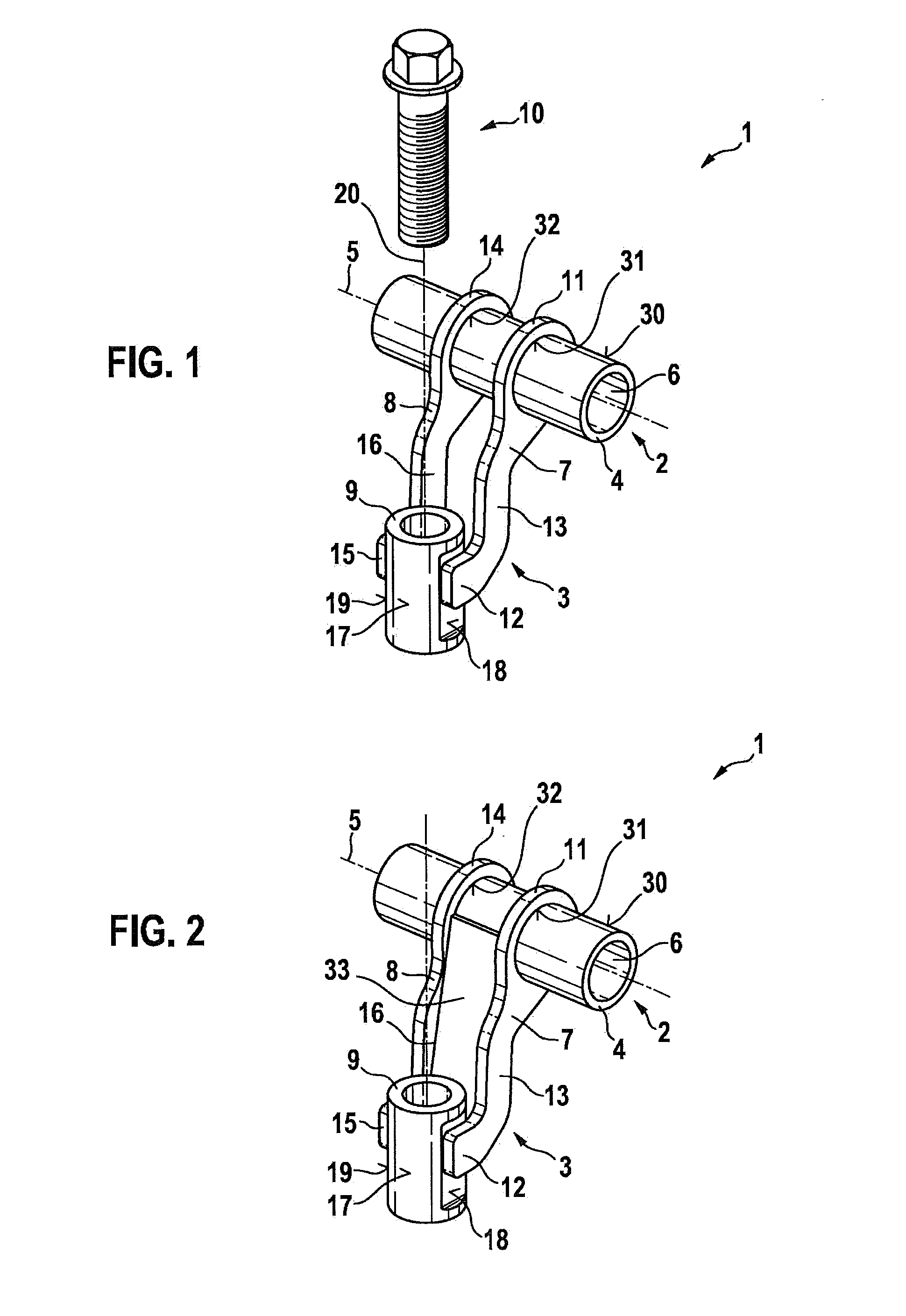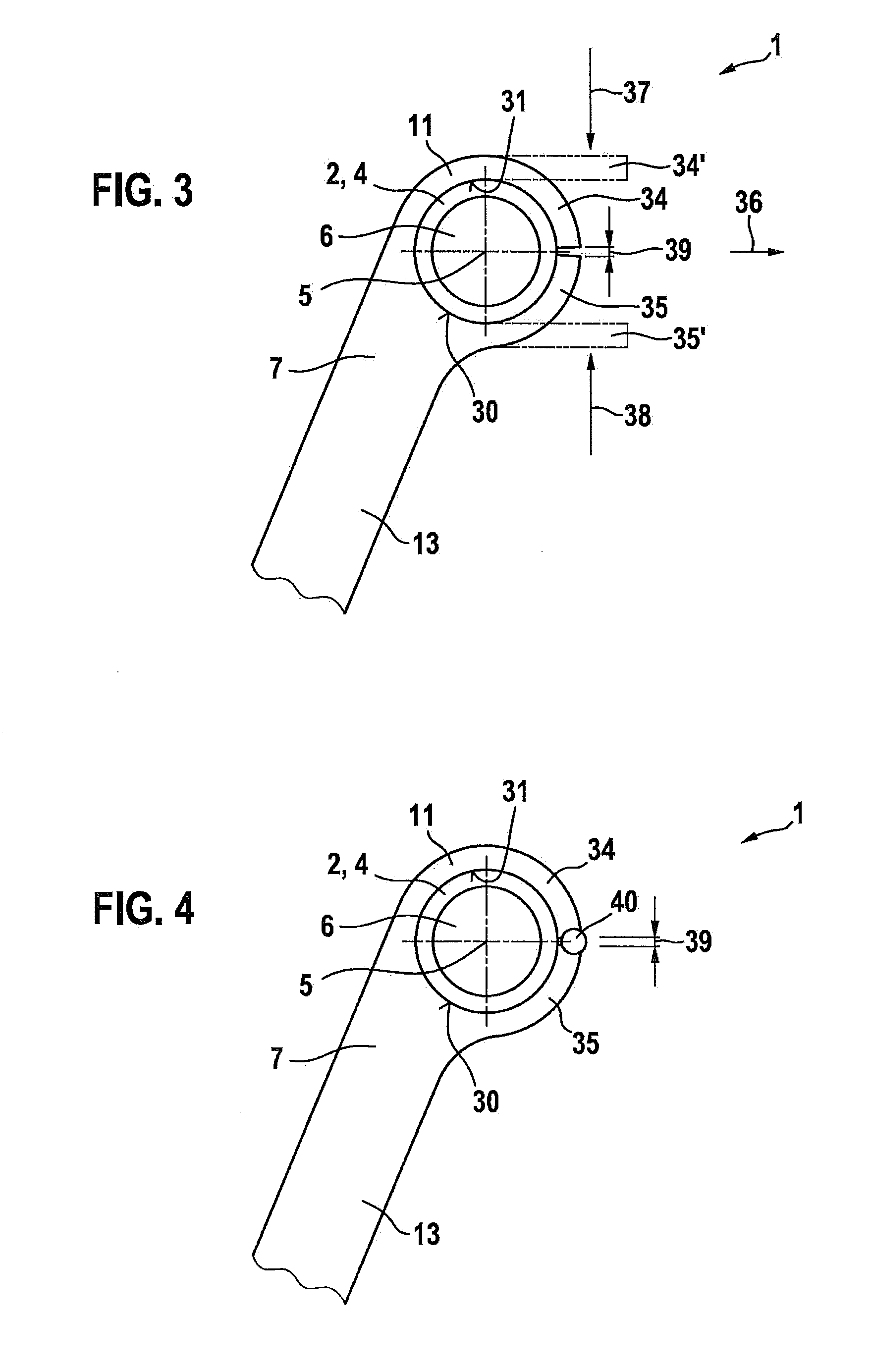Holder for fastening a component to an internal combustion engine
a technology for fastening components and internal combustion engines, which is applied in the direction of machines/engines, fuel injection apparatus, and feed systems, etc., can solve the problems of increasing the angle of the component(s) to be attached, increasing the difficulty of assembly, so as to improve the controllability of the soldering process and improve the checkability of the solder result. , the effect of reducing the solder area
- Summary
- Abstract
- Description
- Claims
- Application Information
AI Technical Summary
Benefits of technology
Problems solved by technology
Method used
Image
Examples
Embodiment Construction
[0038]FIG. 1 shows a system 1 having a component 2 and a holder 3 in an excerpted schematic three-dimensional view according to a first exemplary embodiment. Shown here is a section of a tubular base element 4 of component 2, which extends along a longitudinal axis 5. An interior space 6 is developed within tubular base element 4, which functions as fuel space 6. During an operation fuel can be conveyed via interior space 6. For example, multiple outputs, especially cups, may be provided on tubular base element 4, via which fuel injectors are able to be supplied with fuel. Component 2 is developed as a fuel distributor in such a case. Holder 3 will then be used for fastening fuel distributor 2 to an internal combustion engine. However, holder 3 may also be used for fixating other components 2 on an internal combustion engine.
[0039]One or more further holder(s) is / are preferably provided, which may be developed similar to holder 3. This makes it possible to fasten component 2 via hol...
PUM
 Login to View More
Login to View More Abstract
Description
Claims
Application Information
 Login to View More
Login to View More - R&D
- Intellectual Property
- Life Sciences
- Materials
- Tech Scout
- Unparalleled Data Quality
- Higher Quality Content
- 60% Fewer Hallucinations
Browse by: Latest US Patents, China's latest patents, Technical Efficacy Thesaurus, Application Domain, Technology Topic, Popular Technical Reports.
© 2025 PatSnap. All rights reserved.Legal|Privacy policy|Modern Slavery Act Transparency Statement|Sitemap|About US| Contact US: help@patsnap.com



